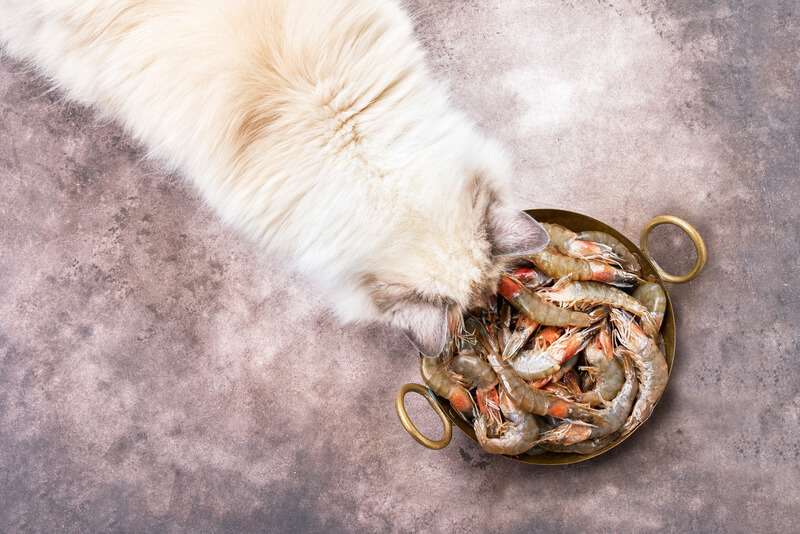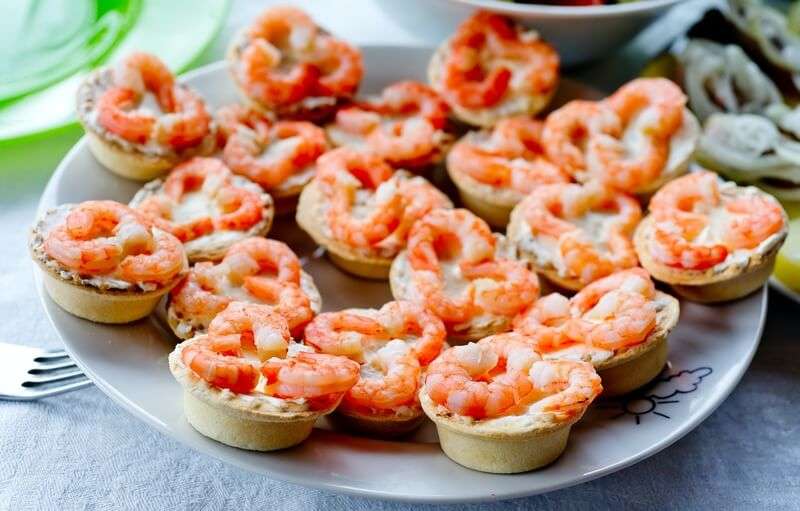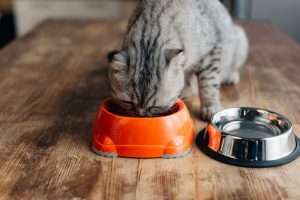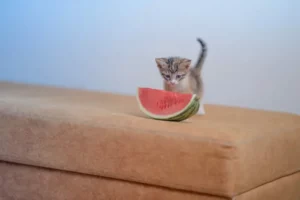In the realm of feline gastronomy, the question often arises – can cats eat shrimp? As curious companions in our daily lives, our cats often share our interest in the delectable treats we savor. However, when it comes to their dietary needs, what’s safe and what’s not can be a perplexing puzzle. With the plethora of information available, it’s crucial to navigate the labyrinth of feline nutrition responsibly. Join us as we dive into the depths of cat dietary habits and uncover whether the oceanic delight of shrimp is a suitable addition to their menu. So, can cats eat shrimp?
Yes, cats can eat cooked shrimp as an occasional treat. It is important to remove the shell and tail first, as these can be a choking hazard. An average-sized cat should eat no more than half of a jumbo-sized shrimp in one sitting.
As a responsible pet owner, understanding what your cat can and cannot eat is crucial for their health and well-being. While it might be tempting to share your meals with them, it’s essential to prioritize their specific nutritional requirements. If you’re interested in learning more about what foods are safe and beneficial for your feline companion, as well as those that should be avoided, continue reading our comprehensive article. Your cat’s health is worth the investment in knowledge and care.
Table of Contents
Can cats eat shrimp?
Can Cats eat Shrimp? The correct response is “yes.” They can eat shrimp. However, you should also be aware of the risks involved, or “the dangers of feeding your cat shrimp,” as veterinarians are wont to say.
Every single thing has both positive and negative aspects. And if the potential risks are more significant than the potential benefits, you would be better off giving your cat a different food. Even if your veterinarian has given you the go-ahead to consume it, you shouldn’t make it the primary course of the meal.
After you have learned everything, there is to know about shrimp, including why some veterinarians believe it is beneficial for cats and why others do not. All of these things that we are teaching you will make a lot of sense. Please read the article below to get a better understanding.
Every single thing has both positive and negative aspects. And if the potential risks are more significant than the potential benefits, you would be better off giving your cat a different food. Even if your veterinarian has given you the go-ahead to consume it, you shouldn’t make it the primary course of the meal.
After you have learned everything, there is to know about shrimp, including why some veterinarians believe it is beneficial for cats and why others do not. All of these things that we are teaching you will make a lot of sense. Please read the article below to get a better understanding.
Kittens of any breed or cats must incorporate meat into their regular diets since they are carnivores. Their primary supply of the essential nutrients they need comes from meat such as chicken, cattle, duck, or anything else.
There are a lot of companies that make food for cats, and many of them are switching out the primary meat ingredient for fish like mackerel, salmon, or tuna? Does this then imply that cats are able to consume seafood such as shrimp?
Yes, it is perfectly fine for cats to consume shrimp.
In addition to that, they are delicious, but they also have a high nutrient density. If you want to give your cat shrimp, however, there are some guidelines you need to follow first. In addition, there are components of the shrimp that cats should not consume since they could make them sick.
There are a lot of companies that make food for cats, and many of them are switching out the primary meat ingredient for fish like mackerel, salmon, or tuna? Does this then imply that cats are able to consume seafood such as shrimp?
Yes, it is perfectly fine for cats to consume shrimp.
In addition to that, they are delicious, but they also have a high nutrient density. If you want to give your cat shrimp, however, there are some guidelines you need to follow first. In addition, there are components of the shrimp that cats should not consume since they could make them sick.

Can cats eat raw shrimp?
Most cats appreciate the taste of raw, fresh shrimp, and it is safe for them to eat. You can eat shrimp raw in recipes, or you can eat it raw on its own as an occasional pleasure.
Just make sure that the shrimp have been completely washed. And also, the digestive tract of shrimp should remove before adding any flavor to the dish. Because cats also cannot digest the digestive system of shrimp.
Just make sure that the shrimp have been completely washed. And also, the digestive tract of shrimp should remove before adding any flavor to the dish. Because cats also cannot digest the digestive system of shrimp.
Can cats eat shrimp that cooks at home?
Shrimp that has been cooked at home is one of the more secure food options for your cat. When you prepare fresh shrimp at home, you have complete control over the seasoning and the preparation of the shrimp.
If you prepare shrimp for your cat, you should refrain from adding any seasonings such as salt, black pepper, or other spices. In addition, make sure that you do not use an excessive amount of butter or frying oil and that you always thoroughly clean the shrimp before you cook them.
If you prepare shrimp for your cat, you should refrain from adding any seasonings such as salt, black pepper, or other spices. In addition, make sure that you do not use an excessive amount of butter or frying oil and that you always thoroughly clean the shrimp before you cook them.
Are shrimp heads, tails, and legs safe for cats to eat?
The heads, tails, and legs of shrimp are often considered ugly and even repulsive parts of the shrimp. If the thought of eating these pieces of shrimp doesn’t make you hungry, you may always share them with your feline companion. So, the shrimp’s body, the legs, the tails, or the head of the shrimp are all delicious to cats.

How much and how often should shrimp be given to cats?
When it comes to feeding shrimp to your cat, the size of the shrimp you choose makes a difference. A little shrimp, for instance, is not only safe but encouraged to be given to your cat as a treat. However, if you are eating large shrimp, you need to be sure to chop off a tiny piece and offer it to your pet after you have finished eating it.
Can shrimp kill cats?
If your cat does not have a severe allergy to shrimp, there is a low probability that your cat will pass away from eating shrimp. Nothing in shrimp might be considered poisonous; therefore, it is entirely safe to eat as long as it is prepared without any salt, seasonings, or oils. Even the shrimp shells and the legs and heads of the shrimp are perfectly fine for cats to consume.
The shrimp’s digestive tract is the one portion of the shrimp that should not be given to your cat under any circumstances. This is because the shrimp’s digestive tract would most likely contain feces that contains fragments and compounds of whatever the shrimp consumed before it was caught. That could be dangerous for your cat, not to mention that it wouldn’t taste perfect!
Raw shrimp, particularly farm-raised shrimp, can be dangerous for cats to consume. Raw shrimp may harbor pathogens such as E. coli, salmonella, or listeria, which may result in disease or infection in the consumer.
Because of this, if you are going to give your cat raw shrimp, it should come from a source that is fresh, free-range, and organic; nevertheless, even if it does, we strongly urge that you prepare it for the sake of your cat’s safety.
The shrimp’s digestive tract is the one portion of the shrimp that should not be given to your cat under any circumstances. This is because the shrimp’s digestive tract would most likely contain feces that contains fragments and compounds of whatever the shrimp consumed before it was caught. That could be dangerous for your cat, not to mention that it wouldn’t taste perfect!
Raw shrimp, particularly farm-raised shrimp, can be dangerous for cats to consume. Raw shrimp may harbor pathogens such as E. coli, salmonella, or listeria, which may result in disease or infection in the consumer.
Because of this, if you are going to give your cat raw shrimp, it should come from a source that is fresh, free-range, and organic; nevertheless, even if it does, we strongly urge that you prepare it for the sake of your cat’s safety.
Why it is advantageous for cats to consume shrimp?
Having a low-calorie count
It would help if you took a short glance at the nutritional profile of your shrimp. Serving a size of three ounces will only set you back 84 calories, which is information that is sure to surprise you. And if you think that’s interesting, here’s the kicker: it never comes with any refined carbohydrates.
According to the findings of several studies, a sizeable portion of the calories that are ingested in one serving is invariably derived from protein. In contrast, only a small amount is derived from fat. Your cat will also be obtaining a variety of minerals and vitamins. All of them are vital for the growth of their immune system in the same portion that they are eating.
According to the findings of several studies, a sizeable portion of the calories that are ingested in one serving is invariably derived from protein. In contrast, only a small amount is derived from fat. Your cat will also be obtaining a variety of minerals and vitamins. All of them are vital for the growth of their immune system in the same portion that they are eating.
Antioxidants
Have you ever come across something by the name of astaxanthin? The molecule in question is a tetraterpenoid, a type of antioxidant that may be found in shrimp. You have to understand that shrimp enjoy eating plenty of algae. You’ll also discover the pigment known as astaxanthin, which is responsible for the red color of shrimp in that algae.
Astaxanthin is a raw element that a cat’s body needs to continue growing and developing its many different systems. It can do this by strengthening the arteries, and it also protects against radicals that might potentially damage the cells of the body.
Astaxanthin is a raw element that a cat’s body needs to continue growing and developing its many different systems. It can do this by strengthening the arteries, and it also protects against radicals that might potentially damage the cells of the body.
Extra nutritional components
Shrimp is more than just a delectable delicacy. It offers nutrient support in the form of calcium, selenium, vitamin B12, magnesium, phosphorus, and other critical minerals. All of these things are good for the growth of the musculoskeletal system and should be done.

FAQs
Yes, cats can eat cooked shrimp, but it's best to offer it as an occasional treat in small amounts. Avoid seasoned or spiced shrimp, as these may harm your feline friend.
No, it is not safe to give raw shrimp to cats. Raw seafood can contain harmful bacteria and parasites that may lead to food poisoning and other health issues.
Shrimp contains protein and essential nutrients, but cats can obtain these from their regular cat food. While a small amount of shrimp occasionally is unlikely to harm, it's not necessary for their diet.
Feeding cats shrimp too often can lead to digestive problems, allergies, or even choking hazards. Additionally, shrimp may contain high levels of sodium and other additives harmful to cats.
If you decide to give your cat shrimp, make sure it's plain, fully cooked, and free from any seasonings or sauces. Remove the shell and tail before offering it as a treat in moderation. Always consult with your veterinarian before introducing any new food to your cat's diet.
The Verdict
Most cats enjoy shrimp, whether it is served either simply cooked or raw. Shrimp can be prepared either way. It is healthy for cats and kittens to consume, has plenty of nutrients, and has a flavor that most cats find delicious.
Just make sure that you either cook the shrimp without adding any salt or seasonings, or if you’re going to go with raw shrimp, it’s completely organic and free-range so that you don’t end up ingesting any chemicals. These are the only two ways to ensure that you don’t get sick from eating shrimp.
In most cases, cats can also consume the heads, shells, legs, and tails of shrimp. However, the shrimp must be deveined and the digestive tract removed before consumption. Then you should let your cat have fun!
Just make sure that you either cook the shrimp without adding any salt or seasonings, or if you’re going to go with raw shrimp, it’s completely organic and free-range so that you don’t end up ingesting any chemicals. These are the only two ways to ensure that you don’t get sick from eating shrimp.
In most cases, cats can also consume the heads, shells, legs, and tails of shrimp. However, the shrimp must be deveined and the digestive tract removed before consumption. Then you should let your cat have fun!
As a cat owner, you may be wondering if it’s safe to feed your feline friend pork. After all, cats are carnivores and their diet primarily consists of meat. Pork is a common meat consumed by humans, but can cats safely eat it too? Checkout our article on that too.










